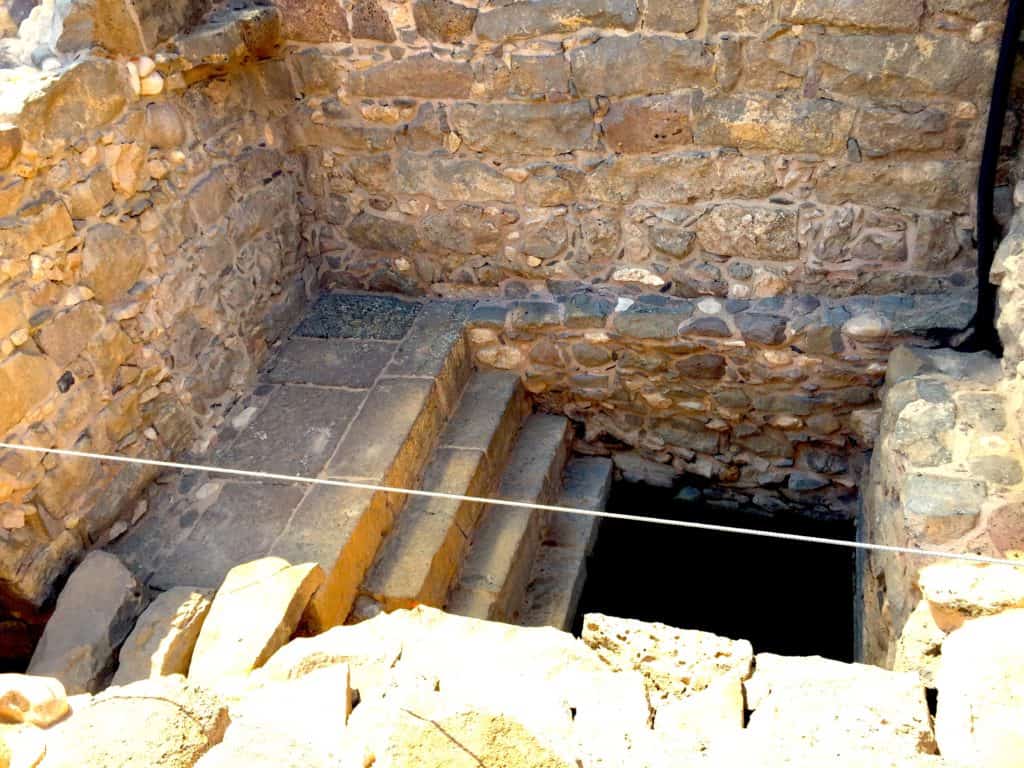Ever wondered what you’d have seen if you’d been there the day Jesus got baptized? All four gospels have accounts of his baptism: in Mark 1:9-11; in Matthew 3:13-16; in Luke 3:21-22, and in John 1:29-34.
Baptizing Jesus is not as simple as it sounds. Here are four extra facts that makes things complicated:
- The earliest Christians were baptized naked
- Christian baptism comes from the Jewish practice of immersion
- Jews at the time of Jesus immersed naked
- Jesus was Jewish
If you put those facts together, you might ask:
Was Jesus Baptized Naked?
Whoa, whoa, whoa! That’s a very weird question, isn’t it?
Why would anyone in their right minds ask such a question?
Well, when you’re a novelist writing a scene about the baptism of Jesus, and you know the facts listed above, you pretty much have to ask the question. Because you have to figure out a way to write the scene so it’s historically accurate and not weird.
But it raises another question, because John the Baptist was immersing lots of people at that time. Not just Jesus. John was immersing hundreds of people.
Men and women together.
In the Jordan river.
In public.
So now we have to ask …
Did John Baptize All Those People Naked?
That just doesn’t seem plausible, does it? Because here’s one more fact that makes it really complicated:
In the time of Jesus, Jews were very particular about not being seen naked in public. That’s one of the big issues they had with their Greek neighbors. Greeks thought it was no big deal to hang out naked in the public baths, or to exercise naked. But Jews considered it shameful to be seen naked.
In the first century, we know that Jews typically immersed in private immersion pools called mikvehs. So it was no shame to immerse naked in a private mikveh, because nobody was around to see. Here’s a picture of a mikveh that I took when I visited Magdala a few years ago. You can see stone steps leading down into a pool.

But a private immersion doesn’t square with the fact we mentioned above, that both men and women came out to hear John the Baptist at the Jordan river. And they immersed there in the Jordan. Right out in public.
So how do we make sense of all this?
It comes down to one question.
How Exactly Did John Baptize People?
I found all this quite puzzling, and I wondered if maybe people wore at least something when they immersed—a loincloth or whatever. So I emailed a well-known Biblical scholar, Prof. Joan Taylor, who is Professor of Christian Origins and Second Temple Judaism at Kings College London. Dr. Taylor is the author of a recent scholarly book on how people dressed at the time of Jesus, and I figured she’d know, if anyone did.
She got back to me quickly with a reply. As it turns out, she’s also the author of a book on John the Baptist, so she’d already thought about the problem of how people got baptized. There’s a simple solution that seems very plausible.
Let’s remember that, in Jewish law, you were required to be naked at the moment when you immersed yourself fully underwater.
But that doesn’t mean you had to walk down into the water naked. Or walk up out of the water naked.
You could wade out into the Jordan river with your tunic still on. (In those days, everyone wore a long tunic made of wool. They didn’t wear socks and they probably didn’t wear a loincloth or any other underclothing.)
Once you got out neck deep into the water, you could pull the tunic up over your head. At which point you’d be naked. But not embarrassed, because the Jordan river is very murky water. If anyone was peeking at you, they wouldn’t see anything.
Then you could immerse yourself fully in the water. You could also immerse your tunic at the same time.
When you finished immersing, you’d still be naked, and still be neck-deep in the water. Now you could just pull your tunic back on over your head and down over your body. Then you could walk up out of the water, fully clothed again.
In Jewish law, you’d now be clean, and your tunic would be too.
And that’s how John the Baptists’s listeners could immerse naked in public and not be weird about it.
Yes, the whole process would be terribly inconvenient. No matter how you do it, immersion is inconvenient. Modern Christian baptisms by immersion are also inconvenient. Prof. Taylor told me by email that she had witnessed a Jewish immersion ceremony in modern Jerusalem that was done exactly this way in a public place in murky water.
Do We Know For Sure That’s How Jesus was Baptized?
No, we can’t be sure that’s how Jesus was baptized.
But it’s plausible. It makes sense of all the historical data we have. It seems to me to be the best explanation of all the facts. And it’s been done that way in modern times.
Certainty is hard to come by in historical research. Sometimes the data looks contradictory. You have to put it together the best you can.
You have to remember that you might be wrong.
You have to always be open to new evidence.
But for now, I’ll take this theory and run with it.
So that’s how I wrote it in my forthcoming novel in the scene where Jesus immerses with John at the Jordan river.
